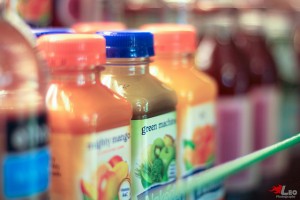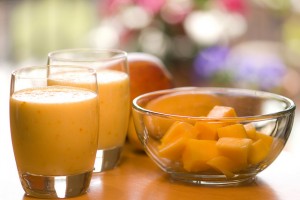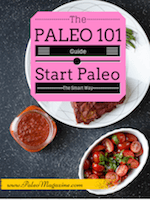6 Hidden Dangers of Juicing
Juicing is all the rage, and it can be an excellent way to get a few more veggies into your day.
However, along with the gain in popularity comes a few risks. If you’re juicing – particularly if you’re buying juices from stores – be particularly careful about these 6 risks:

1. Juices You Buy in the Store are Almost Always Pasteurized. If you’re doing all of your juicing at home with fresh vegetables, then this probably doesn’t apply to you. Pretty much any juice that you buy, however, has been pasteurized.
What this means is the juice was subjected to very high heat in order to preserve it for longer. Unfortunately, the same high heat that preserves the juice also destroys pretty much all of the vitamins and minerals in the juice, along with all of the natural enzymes that would normally help you digest the juice.
Don’t buy juice unless you know it hasn’t been pasteurized, which means that it needs to be extremely fresh.
2. Beware of High Sugar Content. Let’s be honest here. Fruit juices are really nothing more than sugar water. You’re missing the fiber and many of the vitamins and minerals that are found in whole fruits, which means that you’re getting all of the sugar without any of the nutrients. If your juices consist mostly of fruits, then you might as well be drinking soda (although that’s not to say you should drink soda!).

On the other hand, vegetables tend to be much lower in sugar. But you still need to be careful. Vegetables like carrots and beets are fairly high in sugar, and juicing these vegetables is only marginally better than drinking apple juice.
If you’re going to juice, stick only to vegetables (and mostly to green leafy vegetables like kale, spinach, chard, or broccoli).
3. Fiber is good for you. The primary effect of juicing is to remove most of the fiber from a vegetable or fruit. Unfortunately, that fiber is very important.
Fiber from vegetables and fruits helps to keep you full, which you probably know already. What you might not know is that the fibrous part of the vegetable also contains polyphenols, which act as anti-oxidants.
Juicing typically removes both the fiber and the polyphenols.
4. You Still Need Fat and Protein. This is not a knock on juicing, unless you’re using it to replace meals. Vegetables are high in some nutrients, but you still need to eat sufficient fat and protein, as well as the vitamins and minerals that are usually found with fat and protein.
Protein is important because it’s the building block of most of the tissue in your body, and fats are essential for a variety of reasons. In particular, you can’t adequately absorb vitamins like A, D, or K unless you’re getting sufficient fats.
The point is that juicing should be something you do as a supplement and not as a meal replacement.
5. Beware of Additives like Soy Lecithin. If you’re making your own juices from fresh green vegetables, then there is no need to worry about this.
If you’re buying juices from a store or service, though, you’ll want to be extra careful about what else goes into those juices. In particular, watch out for “emulsifiers” or thickeners like soy lecithin and guar gum.
6. You May Be Missing a Lot of Nutrients. Depending on how you’re juicing, it’s likely that you’re not getting most of the nutrients that are found in fruits and vegetables. After all, a great many of the nutrients are located in the skins of fruits and vegetables, and the skins often don’t make it into the juice.
The skin is usually associated with fiber, carotenoids, and flavonoids, all of which are important nutrients.
Should You Stop Juicing?
Juicing has a place and time. If it’s the best way for you to add more vegetables to your diet, then go for it.
It’s still always better just to eat fresh or frozen vegetables, but juicing can be a good alternative.
However, make sure you avoid the risks above, and you’ll be much better off for your efforts.
Images (in order):Hoàng Long – Bé T?p Ch?p Cho?t and madlyinlovewithlife.
Note changes: Apologies for posting that wheatgrass contains gluten. This was an error I made before I realized that wheatgrass actually doesn’t contain gluten despite its name. Please see my other post, Is Wheat Grass Paleo, for more information. Thanks to everyone for pointing out this error.

